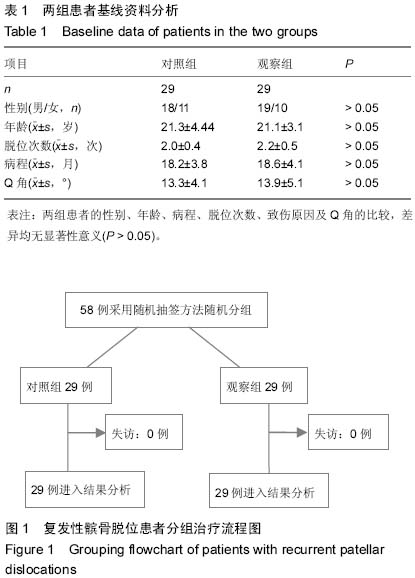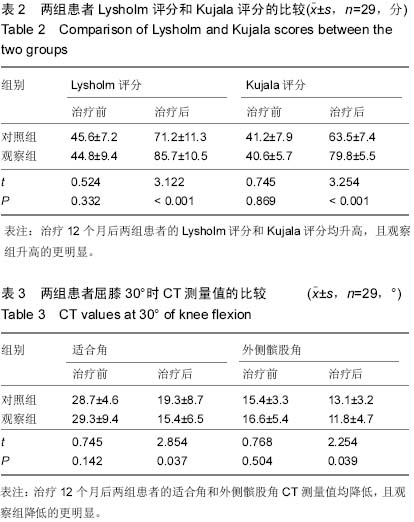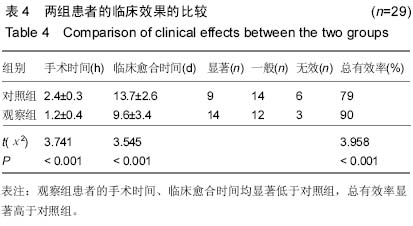中国组织工程研究 ›› 2015, Vol. 19 ›› Issue (29): 4747-4751.doi: 10.3969/j.issn.2095-4344.2015.29.030
• 组织构建临床实践 clinical practice in tissue construction • 上一篇 下一篇
外侧支持带松解联合髌骨韧带重建修复复发性髌骨脱位
陈 辉1,王 群1,燕双喜1,董天云1,邹海兵2
- 1丹江口市第一医院,湖北省丹江口市 442700;
2湖北医药学院,湖北省十堰市 442000
Lateral retinacular release and patella ligament reconstruction under arthroscopy for recurrent patellar dislocations
Chen Hui1, Wang Qun1, Yan Shuang-xi1, Dong Tian-yun1, Zou Hai-bing2
- 1Danjiangkou First Hospital, Danjiangkou 442700, Hubei Province, China;
2Hubei University of Medicine, Shiyan 442000, Hubei Province, China
摘要:
背景:关节镜检查能够直接动态观察髌股关节的对合关系,准确了解髌股关节异常是否可以完全纠正。
目的:分析关节镜下外侧支持带松解联合髌骨韧带重建对复发性髌骨脱位的临床疗效。
方法:复发性髌骨脱位患者共58例,随机将其分为对照组和观察组各29例,对照组患者给予常规手术行外侧支持带松解联合髌骨韧带重建,观察组患者给予关节镜下外侧支持带松解联合髌骨韧带重建。
结果与结论:治疗前两组患者的Lysholm评分和Kujala评分的比较,差异均无显著性意义(P > 0.05);治疗12个月后两组患者的Lysholm评分和Kujala评分均升高,且观察组升高的更明显(P < 0.05)。治疗前两组患者屈膝30°时的适合角和外侧髌股角CT测量值的比较,差异均无显著性义(P > 0.05);治疗12个月后两组患者的适合角和外侧髌股角CT测量值均降低,且观察组降低的更明显(P < 0.05)。观察组患者的手术时间、临床愈合时间均显著低于对照组,总有效率显著高于对照组(P < 0.05)。结果表明关节镜下外侧支持带松解联合髌骨韧带重建修复复发性髌骨脱位疗效确切。
中国组织工程研究杂志出版内容重点:组织构建;骨细胞;软骨细胞;细胞培养;成纤维细胞;血管内皮细胞;骨质疏松;组织工程
中图分类号:


